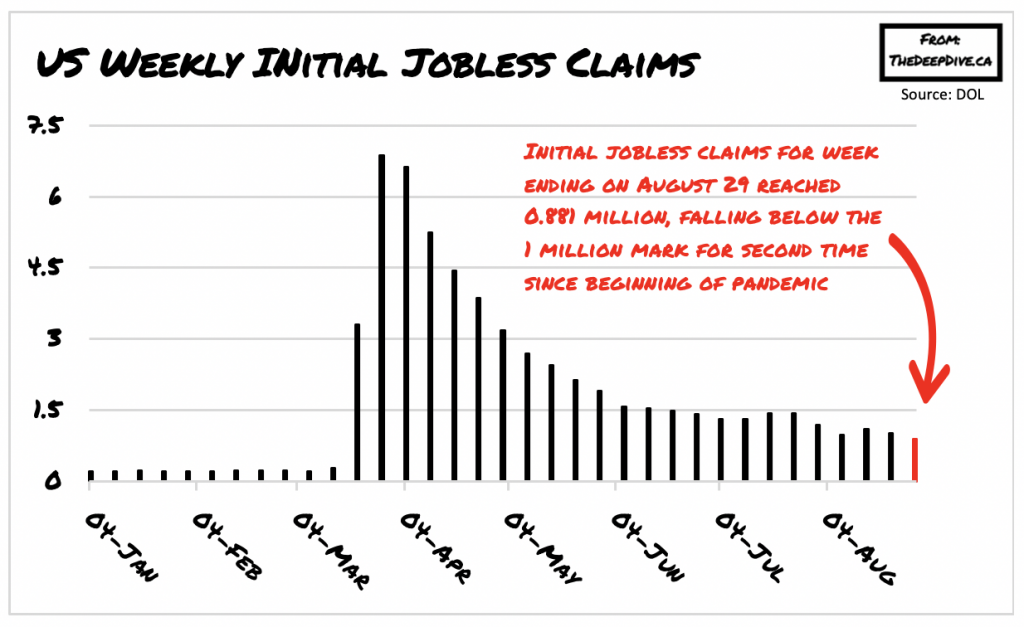Despite the lifting of restrictions and reopening of economies across many states, the US labour market still remains in a slump, unable to gain a substantial foothold. Although initial jobless claims have once again fallen below 1 million during the week ending on August 29, the damage to the labour market remains deep, with employers cutting back a record 2 million jobs to date – permanently.
According to a report published by Challenger, Gray & Christmas, a global outplacement company, the total number of job cuts across the US have reached 1.96 million to date, after dropping by 56% since July. However, the numbers still remain 116% higher compared to the same period a year prior, breaking the previous record set back in 2001 with a loss of 1.95 million jobs.
The majority of the job losses stem from the entertainment industry, which has cut almost 800,000 positions to date. Companies in the air and transport industry are still continuing to downsize their employee count, with a total of 26,545 job cuts initiated in August – 647% higher than the year prior. According to Challenger, Gray & Christmas senior vice president Andrew Challenger, a significant portion of companies in the transportation industry that have previously only temporarily furloughed workers are now reverting to making those layoffs permanent.
To further attest to the lack of rebound in the labour market, the latest DOL data for the week ending on August 29 shows total initial jobless claims coming in at 0.881 million, which is a decline of only 130,000 since the prior week. This is the second time that jobless claims have fallen below 1 million since the onset of the pandemic, and although that may sound as stellar news, there is an underlying aspect that is certainly being overlooked: the DOL changed the calculation method for seasonal adjustment.
Previously, weekly initial jobless claims were seasonally adjusted using the multiplicative seasonal factor. Now, the DOL has switched to using an additive seasonal factor. This means that the latest claims appear to be a substantial decrease from the prior week, but if the previous method was utilized, the decline in initial claims would only amount to approximately 17,000 instead of 130,000. In fact, the labour market situation has barely improved over the last four weeks, because if the seasonal adjustment is completely removed from the equation, actual initial claims have increased from 826,000 to 833,000!
It certainly puzzling why employment calculations would even be seasonally adjusted, given that a global pandemic constitutes as a significant outlier event – if not the most significant outlier event in our lifetimes.

Information for this briefing was found via Challenger, Gray & Christmas and the DOL. The author has no securities or affiliations related to this organization. Not a recommendation to buy or sell. Always do additional research and consult a professional before purchasing a security. The author holds no licenses.









